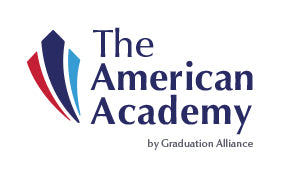The Differences between Online Courses and Traditional High School Classes
Posted on December 06 2011
Online education has become a popular option for learning in this day and age. It offers many advantages to people who have demanding lifestyles, commitments and responsibilities. Online education also offers advantages to those who need an individually tailored course load. Online learning offers several opportunities to high school students.
High school students who want to graduate high school early can acquire extra high school credits through online courses that they complete on their own time, rather than wait for summer school opportunities. Still yet, other students may need to catch up on coursework in order to graduate on time or are interested in classes not offered at their high school. Online high school courses provide convenient opportunities for them as well. Then there are those students who for various reasons might be uninspired by their high school settings, and may do better with coursework they can tackle from home. Others who maybe left high school without earning a diploma can do so entirely with an online high school diploma program. Yet, with all these opportunities available to high school-level learners, online education is not necessarily for everyone. You may thrive best with interactive and live learning, or need a particular structure and schedule to manage well. Fundamentally there is no right or wrong choice when it comes to choosing between online courses and a traditional classroom – it all depends on what your needs and options are – but there are some key differences that can help you make a simple, informative choice.
Firstly, online courses are taken, as the name implies, online. That means that access to a computer and the internet is needed to take online courses, but that is all you need. You can take online courses from virtually any computer, from your local or school library or computer lab, or from the convenience and comforts of your own home. Classes taken at a high school, on the other hand, are taken in person, on location in an actual classroom and with other students. In this setting you interact with the instructor and also with other students in the class.
Online courses tend to be flexible, giving you control over such logistics as when you start and finish and time it takes to complete the course. Traditional classes are scheduled at specific times in specific time slots and locations. If you are absent from one class on any given day, the class will of course continue without you. You would have to catch up on the material missed in that class by borrowing notes from a peer or speaking to the instructor who would give you a synopsis of the day’s lesson and perhaps guide you to appropriate readings and assignments. With an online course, “classes” are directed by your own progress. You may pause or stop at any time in an online course and return to start exactly where you left off without missing anything.
With online courses you learn at your own pace. If there is a problem or concept in your coursework you are struggling with, with the support of your instructors and tutors in an online course, you can take the time you need to firmly grasp the problem before moving on. You do not have to continue until you have mastered the problem. In a classroom setting, an instructor, tutor or peer may certainly give you hands-on help with a problem you are having.
Online learning offers flexibility and self-paced learning, and with a variety of options, makes a perfect choice for any high school-level student looking for a means to get ahead with coursework but not interested in a traditional classroom setting. The American Academy offers over 200 accredited online high school courses to choose from. In this day and age, resourcefulness is important for advancement. Explore your options and tastes against your needs and take advantage of the power of choice!





